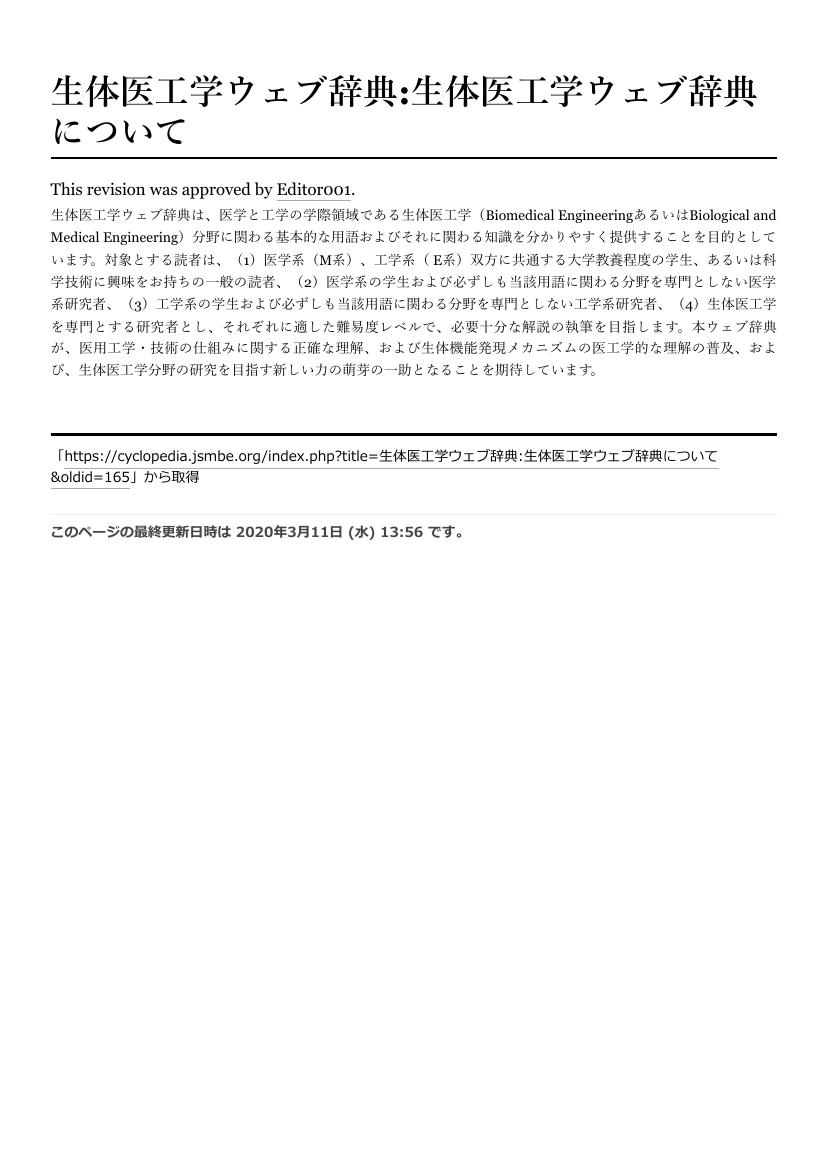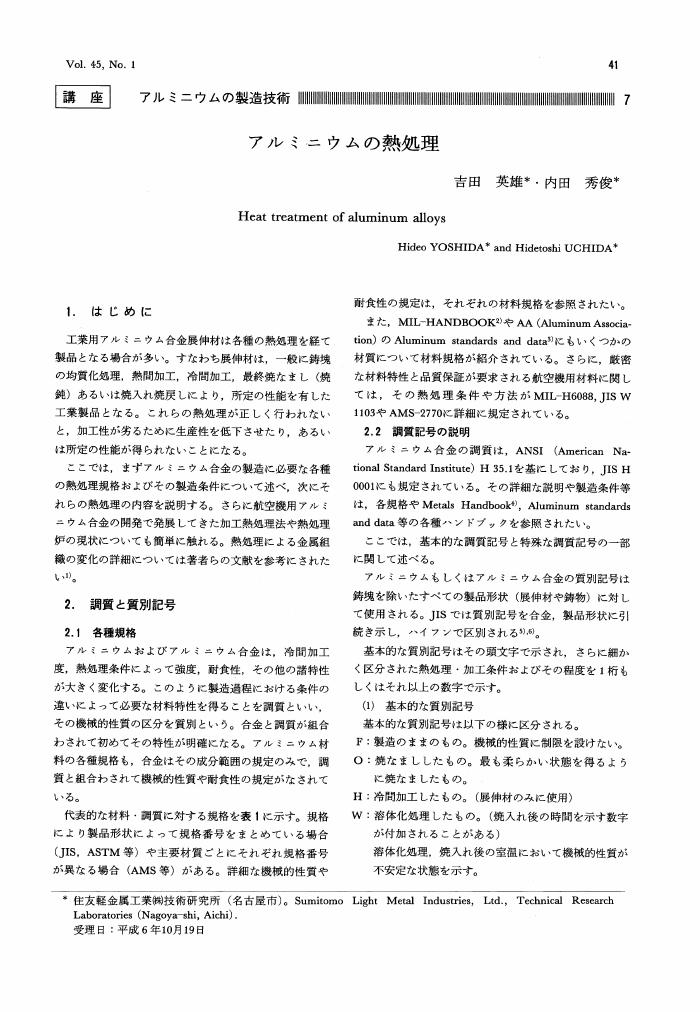2 0 0 0 OA クマ被害軽減と生物保全のための最適土地利用政策
- 著者
- 吉田 惇 井元 智子 河野 達仁
- 出版者
- 公益社団法人 土木学会
- 雑誌
- 土木学会論文集D3(土木計画学) (ISSN:21856540)
- 巻号頁・発行日
- vol.75, no.2, pp.47-58, 2019 (Released:2019-04-20)
- 参考文献数
- 18
日本各地でクマによる農作物被害や人身被害が増加している.本研究は,生物保全とクマ被害軽減を同時に考慮した社会的に望ましい土地利用のあり方を理論的に分析する.具体的には,(a)生態系サービス,(b)農作物被害,(c)農地におけるクマ遭遇リスク(人身被害,恐怖感)の外部性を同時に考慮し,ブナの本数および住宅地と農地それぞれの最適総土地面積条件を導出する.分析により,クマが住宅地に侵入しない場合は市場均衡で決まる総住宅地面積は社会的最適と一致すること,最適総農地面積は農地拡大による生態系サービスの質の低下とクマ被害の減少のトレードオフに依存して,市場均衡より大きい場合も小さい場合もあることを明らかにする.各外部性が最適政策へ与える影響についても整理する.クマが住宅地に侵入する場合の拡張も示す.
2 0 0 0 OA 植物成分配合のフェイスパウダーによるアレルギー性接触皮膚炎
- 著者
- 西井 貴美子 須貝 哲郎 赤井 育子 田水 智子 吉田 慶子
- 出版者
- Meeting of Osaka Dermatological Association
- 雑誌
- 皮膚 (ISSN:00181390)
- 巻号頁・発行日
- vol.42, no.2, pp.143-147, 2000 (Released:2010-08-25)
- 参考文献数
- 4
33歳, 女性。約3週間前に化粧品を変更し, 2日目頃から顔面に療痒性皮疹を認めたため来院した。初診時, 顔面に一部落屑を伴う療痒性紅斑を認めた。パッチテストで使用していたフェイスパウダーとパフに陽性, 成分パッチテストでオクテニルコハク酸トウモロコシデンプンエステルアルミニウム, ムクロジエキスに陽性であった。ムクロジは果皮, 花に薬用部分のある植物である。近年, 無添加, 植物成分配合というキャッチフレーズの製品を多く見かけるが, 漢方薬, 食品に含まれている植物も多く注意が必要である。
2 0 0 0 OA ドイツ・デンマークの 再生可能エネルギーと省エネ : 北海道の参考事例
- 著者
- 吉田 文和
- 巻号頁・発行日
- 2012-10-19
環境政策セミナー:再生可能エネルギーとグリーンエコノミー(Seminar on Environmental Policy:Renewable Energy & Green Economy). 2012年10月19日. 北海道大学学術交流会館講堂 , 札幌市.
2 0 0 0 OA ヴァン・アレン帯に挑むアストロバイオロジー実験
- 著者
- 橋本 博文 横堀 伸一 三田 肇 高橋 昭久 吉田 由香里 高橋 和生 稲富 裕光 Hashimoto Hirofumi Yokobori Shin-ichi Mita Hajime Takahashi Akihisa Yoshida Yukari Takahashi Kazuo Inatomi Yuko
- 出版者
- 宇宙航空研究開発機構宇宙科学研究所(JAXA)(ISAS)
- 雑誌
- 観測ロケットシンポジウム2018 講演集 = Proceedings of Sounding Rocket Symposium 2018
- 巻号頁・発行日
- 2018-07
第1回観測ロケットシンポジウム(2018年7月17日-18日. 宇宙航空研究開発機構宇宙科学研究所(JAXA)(ISAS)), 相模原市, 神奈川県
2 0 0 0 OA アフリカにおける産油国および新興産油国経済の現状分析と理論的検討
- 著者
- 吉田 敦
- 出版者
- 千葉商科大学国府台学会
- 雑誌
- 千葉商大論叢 (ISSN:03854558)
- 巻号頁・発行日
- vol.59, no.2, pp.63-81, 2021-11-30
2 0 0 0 OA 人工膝関節置換術後早期の自動膝関節可動域は自立歩行獲得期間や在院日数に影響する
- 著者
- 林 祐介 吉原 聡 吉田 久雄 見川 彩子 林 明人 藤原 俊之
- 出版者
- 一般社団法人日本理学療法学会連合
- 雑誌
- 理学療法学 (ISSN:02893770)
- 巻号頁・発行日
- pp.11613, (Released:2019-11-22)
- 参考文献数
- 28
- 被引用文献数
- 1
【目的】人工膝関節置換術(以下,TKA)術後患者における術後早期膝関節可動域が自立歩行獲得期間および在院日数に及ぼす影響を検討した。【方法】TKA 術後患者78 例を対象とした。年齢とBody Mass Index,術後4 日時点の膝関節可動域(自動・他動屈曲,自動・他動伸展),運動時痛と歩行時痛(Visual analogue scale),炎症所見(血清C 反応性蛋白)と術後7 日時点の膝関節伸展筋力(ハンドヘルドダイナモメーター)を評価し,在院日数および自立歩行獲得期間に与える影響を重回帰分析(ステップワイズ法)にて検討した。【結果】重回帰分析の結果,在院日数および自立歩行獲得期間に有意に影響する因子は,それぞれ自動膝屈曲可動域と年齢,および自動膝屈曲可動域と自動膝伸展可動域が抽出された。【結論】TKA 術後患者において,術後早期の自動膝関節可動域の拡大は,自立歩行獲得期間および在院日数の短縮に影響を与える可能性がある。
2 0 0 0 クセノポーン騎兵隊長・馬術
- 著者
- 田中秀央, 吉田一次 訳
- 出版者
- 生活社
- 巻号頁・発行日
- 1944
2 0 0 0 OA 研究ノート 日本古代・中世初期の都市
- 著者
- 吉田 歓
- 出版者
- 山形県立米沢女子短期大学附属生活文化研究所
- 雑誌
- 山形県立米沢女子短期大学附属生活文化研究所報告 = REPORTS OF THE INSTITUTE FOR CULTURE IN LIFE (ISSN:0386636X)
- 巻号頁・発行日
- no.49, pp.57-66, 2022-03-15
2 0 0 0 IR 中高生の性的いじめの現状 : 教員と学生へのインタビュー調査から
- 著者
- 葛西 真記子 吉田 亜里咲 Makiko KASAI Arisa YOSHIDA
- 出版者
- 鳴門教育大学
- 雑誌
- 鳴門教育大学研究紀要 鳴門教育大学 編 (ISSN:18807194)
- 巻号頁・発行日
- vol.32, pp.226-236, 2017
The present situation about sexual bullying in junior and high schools is unknown and there have not been many researches on this topic. Severe incidents including suicide and rape caused by sexual bullying, however, have been reported in the news. In this study, junior and high school teachers and university students were interviewed in order to categorize patterns of sexual bullying taking place in schools. Data from 13 teachers and 17 students showed that 1) teachers recognized physical and verbal bullying more than students, 2) students recognized more sexual bullying than teachers, and 3) lifting skirts, pulling down pants, and hearing dirty jokes were the top 3 examples of sexual bullying reported by both teachers and students. These examples were considered to be less severe and both bullies and bullied engaged in these types bullying as a form of communication. However, these could lead to more severe types of bullying, such as rape. Students also mentioned difficulties in reporting these incidents, while teachers faced challenges in the identification and intervention of such cases. Therefore, schools need to define sexual bullying and their countermeasures.
2 0 0 0 OA 淡路島三原平野における農業生産をめぐるネットワーク
- 著者
- 吉田 国光
- 出版者
- 日本村落研究学会
- 雑誌
- 村落社会研究ジャーナル (ISSN:18824560)
- 巻号頁・発行日
- vol.20, no.1, pp.35-46, 2013-10-25 (Released:2015-05-13)
- 参考文献数
- 22
- 被引用文献数
- 2 2
This study reveals interactions between agricultural production and actor’s relations in Kamihata settlements in Minami-Awaji City, Mihara Plain. Farm management in farm households is examined to determine whether farm activities, such as lending equipment, supplying compost, and establishing delivery routines develop the relationships among farmers or between farmers and other stakeholders, while identifying the kind of relationships formed. Moreover, the contribution of multi-layered network formed through relations between and among such stakeholders is considered. The research method adopts social network analysis. This approach allows a quantitative stand in analyzing human relations based on the presence or strength of ties between nodes, the distance between such nodes, and the node parameters. Economic activity and social life are inseparable in rural areas and villages, and ties among farm households are characterized by various roles existing in a multilayered structure. This study focuses on the extent and width of social ties among certain nodes. Results show that in Mihara Plain, the “ three crop” rotation system―a combination of paddy rice, onions,and cabbages or paddy rice, lettuce, or Chinese cabbages―has been widely promoted. The study area practiced intensive farming. The production of leafy vegetables served as an economic activity that could augment the income of farm households. Farm management, as practiced by every farmer household, progressed within the range of social groups such as settlements and districts, and did not become completely independent albeit done individually. Various territorial relations became a conforming frame, as seen in the sharing of equipment and supplying of compost. The network was selectively formed according to the purpose. In addition to the abovementioned relations, networks based on the delivery of crops was observed. These networks extended in various ways, according to every farmer household's management policy, and had various influences on every farmer's management practices.
2 0 0 0 空冷ディーゼル・エンジン
2 0 0 0 OA 慢性副鼻腔炎に対するクラリスロマイシン少量長期投与療法
- 著者
- 李 雅次 渡部 一雄 吉田 ひかり 吉田 知之 舩坂 宗太郎
- 出版者
- 耳鼻咽喉科展望会
- 雑誌
- 耳鼻咽喉科展望 (ISSN:03869687)
- 巻号頁・発行日
- vol.36, no.5, pp.657-662, 1993-10-15 (Released:2011-08-10)
- 参考文献数
- 11
- 被引用文献数
- 4
慢性副鼻腔炎患者20例に対してクラリスロマイシンを1日朝1回200mg内服投与した。投与開始後1ヵ月目ですでに後鼻漏および嗅覚障害が60%以上改善した。投与開始後3ヵ月目では, すべての評価項目で改善がみられたが, 自覚症状の鼻閉および他覚所見の鼻汁の性状の改善が著しかった。腹痛を訴えた1例が本剤による副作用と思われたが, 投与中止により症状はすみやかに消失した。本剤に対して感受性のない検出菌を認めた症例でも治療効果がみられ, 本治療の効果は単なる抗菌作用ではないことが推察された。
2 0 0 0 OA 中高生の性的いじめの現状 : 教員と学生へのインタビュー調査から
- 著者
- 葛西 真記子 吉田 亜里咲 Makiko KASAI Arisa YOSHIDA
- 出版者
- 鳴門教育大学
- 雑誌
- 鳴門教育大学研究紀要 = Research bulletin of Naruto University of Education (ISSN:18807194)
- 巻号頁・発行日
- vol.32, pp.226-236, 2017-03-10
The present situation about sexual bullying in junior and high schools is unknown and there have not been many researches on this topic. Severe incidents including suicide and rape caused by sexual bullying, however, have been reported in the news. In this study, junior and high school teachers and university students were interviewed in order to categorize patterns of sexual bullying taking place in schools. Data from 13 teachers and 17 students showed that 1) teachers recognized physical and verbal bullying more than students, 2) students recognized more sexual bullying than teachers, and 3) lifting skirts, pulling down pants, and hearing dirty jokes were the top 3 examples of sexual bullying reported by both teachers and students. These examples were considered to be less severe and both bullies and bullied engaged in these types bullying as a form of communication. However, these could lead to more severe types of bullying, such as rape. Students also mentioned difficulties in reporting these incidents, while teachers faced challenges in the identification and intervention of such cases. Therefore, schools need to define sexual bullying and their countermeasures.
2 0 0 0 OA 先天性鼻咽腔閉鎖不全症における精神発達について- 特に特徴的顔貌を呈する症例について
- 著者
- 山下 夕香里 道 健一 今井 智子 鈴木 規子 吉田 広
- 出版者
- 一般社団法人 日本口蓋裂学会
- 雑誌
- 日本口蓋裂学会雑誌 (ISSN:03865185)
- 巻号頁・発行日
- vol.8, no.2, pp.204-216, 1983-12-24 (Released:2013-02-19)
- 参考文献数
- 37
いわゆる粘膜下口蓋裂を含めた先天性鼻咽腔閉鎖不全症(Congenital Velopharyngeal Incompetence以下CVPI)のなかには,著しい開鼻声を伴う構音障害,心奇型などの合併奇型に加えて精神発達の遅れを伴う症例が多いとされているが詳細な報告はほとんどみられない.そこでわれわれはCVPIの診断基準を定義した上で,鼻咽腔形態・機能および顔貌に関する客観的な計測結果が明らかとなっているCVPI15例,対照群として唇顎口蓋裂症例18例(Cleft Lip and Palate以下CLP)を対象症例とし,4才2ヶ月-13才2ヶ月時に,WPPSIまたは,WISC-R,ITPA言語学習能力診断検査,Frostig視知覚発達検査(DTVP)を行い,鼻咽腔形態による分類型、Calnanの3徴候,特徴的顔貌所見別に精神発達について比較検討を行った.その結果,顔貌所見別では特徴的顔貌群はその他の群およびCLP群に比べ1%水準で有意に低い値を示した.鼻咽腔形態による分類型別では軟口蓋の長さと咽頭腔の深さとの関係が不均衡なII型群が低い値を示し,Calnanの3徴候別では無徴候,1徴候群が低い値を示した.以上の結果より特徴的顔貌所見を有する症例とその他の症例との間には精神発達に著しい相違がみられ,さらに鼻咽腔形態、Calnanの3徴候と精神発達との関連性も示唆された.われわれは従来より鼻咽腔形態,顔面形態の客観的分折によりCVPIの中の1つのカテゴリーとしての特徴的顔貌の存在を証明し報告してきたが,今回はさらにこれらの特徴的顔貌を呈する症例において精神発達の遅れが認められ疾患としての独立性が0層明らかとされた.これらのことよりわれわれは先天性鼻咽腔閉鎖不全,特徴的顔貌,精神発達の遅れなどの所見がみられる症例を新しい症候群として一括して扱うことを提唱したい.
2 0 0 0 OA 嘉永癸丑吉田松陰遊歴日録
2 0 0 0 OA 生体医工学ウェブ辞典(第一分冊)
- 著者
- 相川 慎也 芦原 貴司 天野 晃 有末 伊織 安藤 譲二 伊井 仁志 出江 紳一 伊東 保志 稲田 慎 井上 雅仁 今井 健 岩下 篤司 上村 和紀 内野 詠一郎 宇野 友貴 江村 拓人 大内田 研宙 大城 理 太田 淳 太田 岳 大谷 智仁 大家 渓 岡 崇史 岡崎 哲三 岡本 和也 岡山 慶太 小倉 正恒 小山 大介 海住 太郎 片山 統裕 勝田 稔三 加藤 雄樹 加納 慎一郎 鎌倉 令 亀田 成司 河添 悦昌 河野 喬仁 紀ノ定 保臣 木村 映善 木村 真之 粂 直人 藏富 壮留 黒田 知宏 小島 諒介 小西 有人 此内 緑 小林 哲生 坂田 泰史 朔 啓太 篠原 一彦 白記 達也 代田 悠一郎 杉山 治 鈴木 隆文 鈴木 英夫 外海 洋平 高橋 宏和 田代 洋行 田村 寛 寺澤 靖雄 飛松 省三 戸伏 倫之 中沢 一雄 中村 大輔 西川 拓也 西本 伸志 野村 泰伸 羽山 陽介 原口 亮 日比野 浩 平木 秀輔 平野 諒司 深山 理 稲岡 秀検 堀江 亮太 松村 泰志 松本 繁巳 溝手 勇 向井 正和 牟田口 淳 門司 恵介 百瀬 桂子 八木 哲也 柳原 一照 山口 陽平 山田 直生 山本 希美子 湯本 真人 横田 慎一郎 吉原 博幸 江藤 正俊 大城 理 岡山 慶太 川田 徹 紀ノ岡 正博 黒田 知宏 坂田 泰史 杉町 勝 中沢 一雄 中島 一樹 成瀬 恵治 橋爪 誠 原口 亮 平田 雅之 福岡 豊 不二門 尚 村田 正治 守本 祐司 横澤 宏一 吉田 正樹 和田 成生
- 出版者
- 公益社団法人 日本生体医工学会
- 雑誌
- 生体医工学 (ISSN:1347443X)
- 巻号頁・発行日
- vol.Dictionary.1, pp.1-603, 2022 (Released:2022-03-31)
2 0 0 0 OA アルミニウムの熱処理
- 著者
- 吉田 英雄 内田 秀俊
- 出版者
- 一般社団法人 軽金属学会
- 雑誌
- 軽金属 (ISSN:04515994)
- 巻号頁・発行日
- vol.45, no.1, pp.41-55, 1995-01-30 (Released:2008-10-30)
- 参考文献数
- 29
- 被引用文献数
- 5 4
2 0 0 0 OA 海馬における内因性持続性発火とその役割
- 著者
- 吉田 基治
- 出版者
- 一般社団法人 日本生物物理学会
- 雑誌
- 生物物理 (ISSN:05824052)
- 巻号頁・発行日
- vol.56, no.5, pp.262-265, 2016 (Released:2016-09-27)
- 参考文献数
- 18
Persistent firing is believed to support short-term (up to tens of seconds) information retention in the brain. Although recurrent synaptic excitation is widely known to support persistent firing, recent studies have established that neurons can support persistent firing through an intrinsic mechanism within individual cells. This intrinsic mechanism involves activations of cholinergic receptors and the calcium activated non-selective cationic (CAN) current, and is observed in multiple brain areas including the hippocampus. Computer simulations from my group indicate that this mechanism is crucial for persistent firing in vivo, and it underlies the transition of hippocampal activity between encoding and consolidation stages.
- 著者
- 大友 駆 武藤 雄紀 吉田 圭佑 待井 宏文 櫻庭 均 石橋 敏幸
- 出版者
- 福島医学会
- 雑誌
- 福島医学雑誌 = Fukushima medical journal (ISSN:00162582)
- 巻号頁・発行日
- vol.70, no.2, pp.111-116, 2020-08

